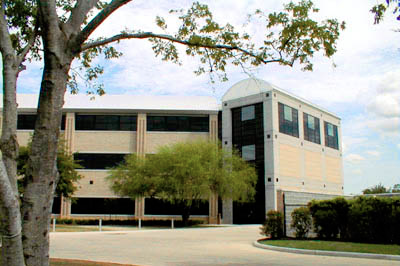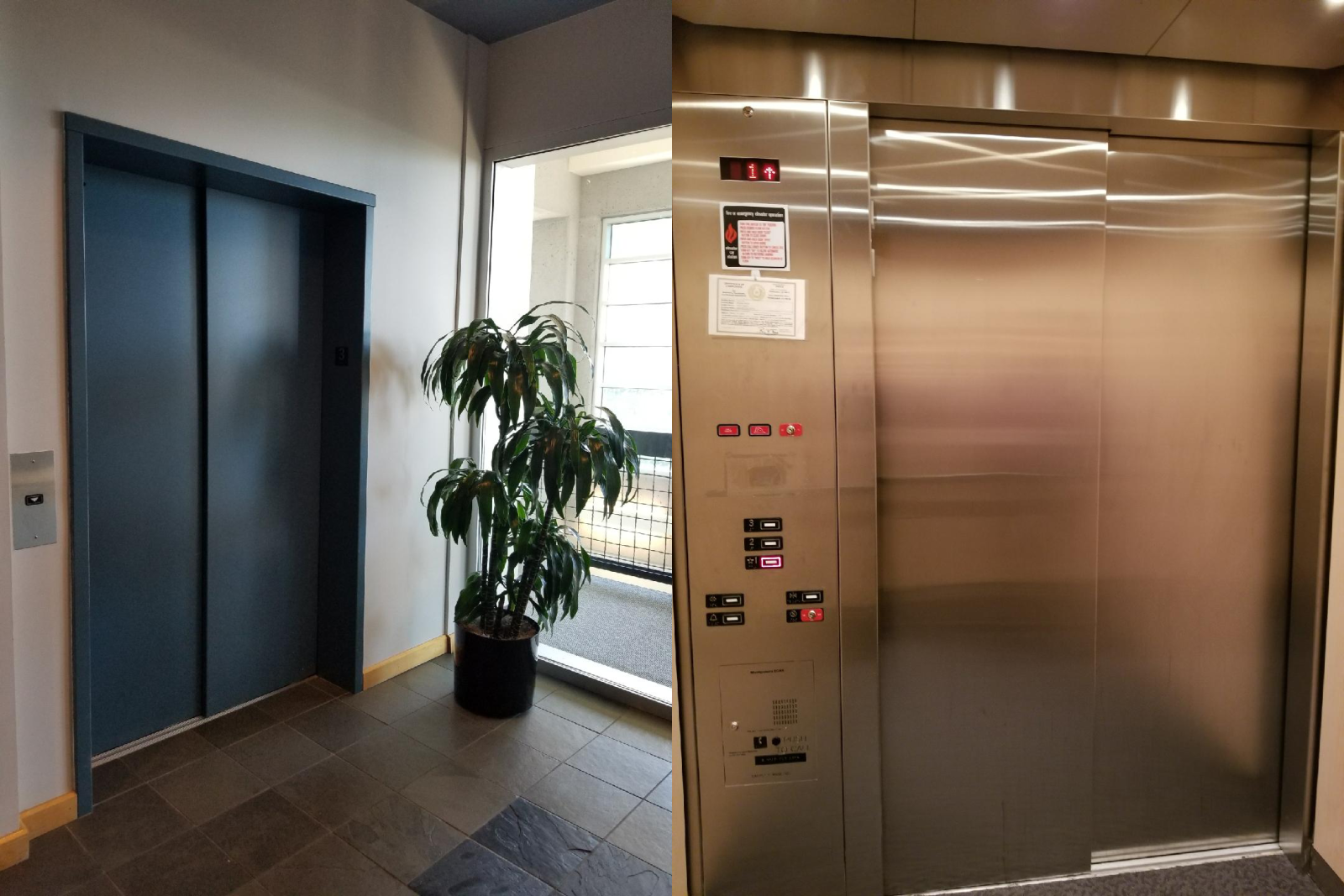The Long and the Short of Elevators
by Andy Boyd
Today, the way to the top. The University of Houston presents this series about the machines that make our civilization run, and the people whose ingenuity created them.
The elevator ride to the top floor of the Houston Public Media building always brings one thought to mind: this elevator, is slow. The building stands three oversize floors tall, but the ride takes forty seconds. It's not that the elevator's outdated - it's relatively new. What it lacks in speed it makes up for in heft, with the size and muscle to handle a grand piano or other heavy studio equipment. It's designed for its job.

The LeRoy and Lucile Melcher Center for Public Broadcasting, housing Houston Public Media on the University of Houston campus. Photo Credit: University of Houston

The Houston Public Media elevator. Photo Credit: Joshua Zinn
Such an elevator wouldn't suffice, however, in the world's tallest buildings, where elevators may ferry people over one hundred floors. Speed is of the essence, and the need for speed has led to breathtaking new technologies.
The challenges facing tall, fast elevators are many. As they move through the shaft, air gets in the way - a real problem at higher speeds. Waiting for an elevator, you can sometimes hear the air pushed aside as cars whoosh by. Newer elevator cars are aerodynamically designed much like airplanes, greatly reducing the whoosh.
One of the biggest limitations confronting tall elevators is the weight of the steel ropes suspending the cars and counterbalances. Steel ropes in tall elevator shafts can make up over seventy percent of the elevator system's overall weight, and at a certain point the ropes simply can't support their own weight. Recent advances in materials have reduced rope weights by as much as ninety percent, making possible elevator shafts that could span well over two hundred floors. Manufacturers are now experimenting with elevators that rely on electromagnetic propulsion similar to that of bullet trains. This eliminates the need for ropes and opens the door for horizontal and diagonal motion. Such advances free architects to fundamentally rethink building design.

Steel Wire Rope Photo Credit: Wikipedia
Annoying ear popping is reduced with controlled pressure changes within the elevator cars. And the ride in high-speed elevators is smoother than ever, providing a near motionless experience as cars are guided along rails with specially designed roller guides. It's a real engineering challenge given that the distance separating the guide rails varies with temperature and the natural sway of the building.
The net result is that the fastest elevators can reach speeds close to twenty-three miles per hour - somewhat more than two floors per second. At that speed, an elevator traveling to the top of One World Trade Center, the tallest building in the Western Hemisphere, would take roughly the same time it takes me to travel the two floors of the Houston Public Media building - about forty seconds.

One World Trade Center from New York Harbor Photo Credit: Wikipedia

One World Observatory entrance. Photo Credit: Wikipedia
Of course, the elevators that whisk tourists to observation platforms high above cities often boast one additional technological advance - video screens to pass the time. Should the station manage a similar upgrade to its elevator, or even just an audio feed, I hear NPR and PBS have a pretty good line up.
I'm Andy Boyd at the University of Houston, where we're interested in the way inventive minds work.
(Theme music)
Many thanks to listener Sally Horrigan for bringing the topic of this essay to my attention.
K. Al-Kodmany. "Tall Buildings and Elevators: A Review of Recent Technological Advances." Buildings 5 (2015): 1070-1104.